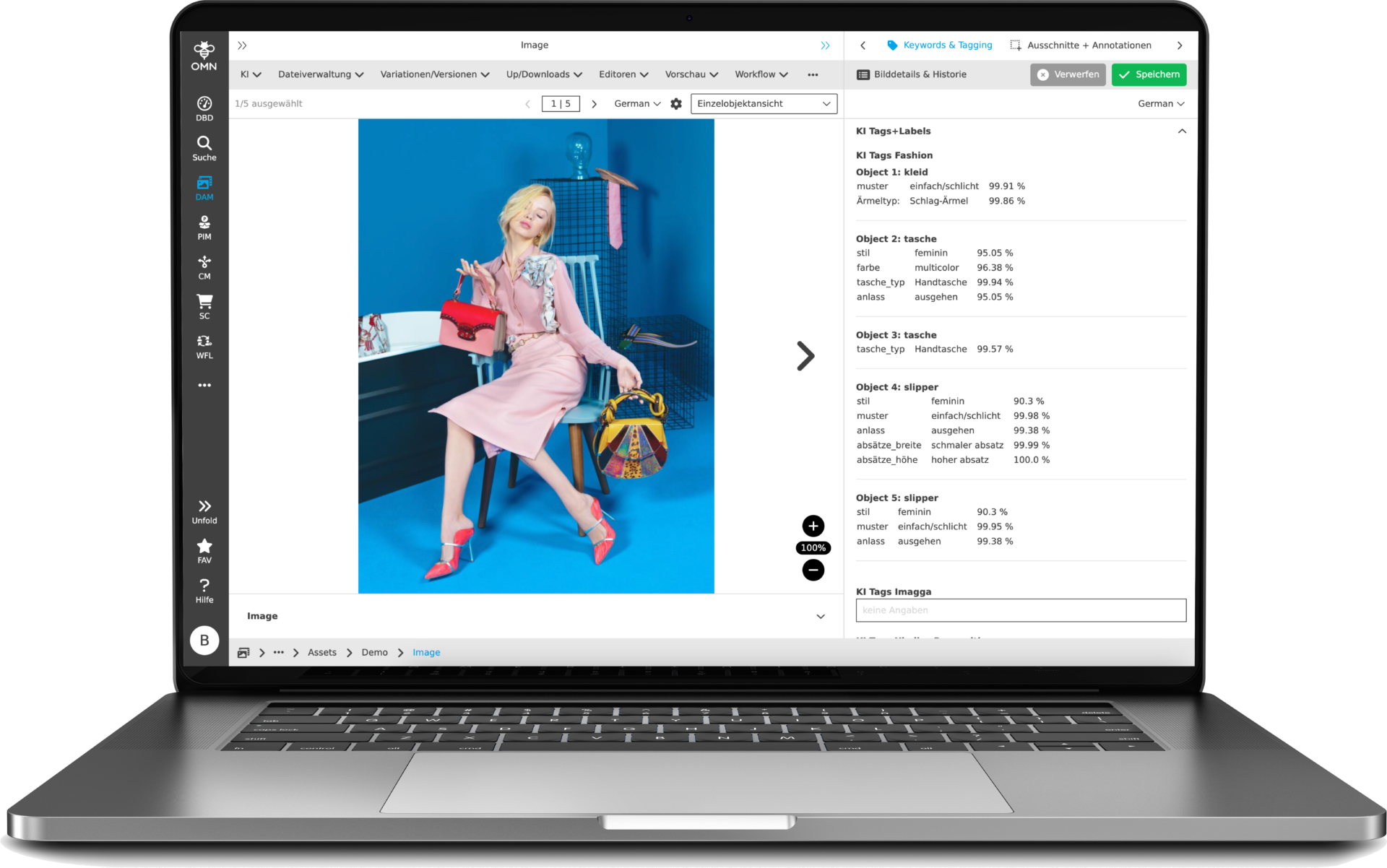The content creation lifecycle: A guide to optimising the use of content
Digital Asset Management
Content creation is a central component of every marketing department. But creating content is only the first step. A well-thought-out content creation lifecycle ensures that content can be utilised, managed and reused efficiently. A well-structured content lifecycle ensures that content can be optimally utilised and maximised. In this blog post, we look at the individual phases of the lifecycle and show how a DAM (digital asset management) system plays a central role.
Why content is queen?
Content refers to all types of information and media that are provided in various formats to convey a specific message. This includes texts, images, videos, graphics, audio files and more. Content plays a central role in digital marketing in particular, as it forms the basis for communication with the target group.
Media assets, such as images, videos and graphics, are an essential component of content. They give content visual and emotional depth and make complex information clearer and easier to understand. The combination of text and media assets creates high-quality content that captures the attention of users and effectively conveys the brand message

The individual phases during the content life cycle
A successful content strategy does not end with the creation of content – rather, all content goes through a life cycle that goes far beyond production. Simply creating content is not enough – a structured process is required to ensure that the content actually delivers the desired benefits. This process can be divided into four central phases: Creating content, managing content, sharing content and archiving content. Each of these phases plays an essential role in the life cycle of content and helps to ensure that content is used efficiently, distributed in a targeted manner and remains valuable in the long term.
A DAM (Digital Asset Management) system is a central component in this process, enabling the structured management and availability of all media assets. In the following, we highlight the four key phases in the content creation life cycle with the help of a DAM system.
1. Creating content: The birth of content
The first phase of the content lifecycle is about creating content. Here, texts, images, videos and other media content are developed that are tailored to the needs of the target group. Creative ideas are realised and assets are created that form the core of the communication.
Efficient content creation relies on existing resources. Creators use existing assets such as text modules, graphics or images that they can easily integrate into new content. Ideally, these assets are available in a DAM system in a media-neutral format, which means that they can be accessed and reused at any time, regardless of their intended use or final format. Centralised storage in the DAM system allows teams to work faster and more efficiently as they do not have to focus on the time-consuming search for existing assets.
2. Managing content: Organisation is half the battle
As soon as the content has been created and finalised, the management phase begins. In this phase, the content is indexed and stored centrally in the DAM system. Keywording enables a simple and accurate search for specific content, which is an enormous advantage, especially with extensive content libraries.
Centralised storage in the DAM system makes the content accessible not only to content creators, but also to other departments such as sales, PR or social media. Anyone who needs access can quickly find the required content and use it for other purposes. Stored licence information or other details help to ensure that the content is used correctly. This promotes better collaboration and saves time that would otherwise be spent searching for and organising content.
3. Sharing content: Distribute the content in a targeted manner
In the third phase, the content from the DAM system is made available for other systems. A well-structured DAM makes it possible to prepare content for specific channels and distribute it automatically. Whether for social media, websites, newsletters or print media – the content is output in the exact format required for the respective channel. No knowledge of format conversion or special software is required, as this is all done within the DAM system.
The sharing and targeted distribution of content is crucial to the success of a content marketing strategy. Automation functions in the DAM system save time and ensure that the content appears in the right place at the right time. This phase ensures that the valuable content created also achieves the desired reach and reaches its target group in a channel-appropriate manner.
4. Archiving content: What to do with outdated content?
Nothing is up to date forever – this also applies to content. The final phase of the content lifecycle is about archiving. Outdated content is either updated or archived. A DAM system makes it possible to archive content securely and at the same time organise it in such a way that it is still available for research purposes at a later date.
Archived content can be reactivated if required or used as inspiration for the creation of new content. It is particularly important to make a clear distinction between active and archived content in order to maintain an overview and ensure the relevance of the published content.
Sparring Partner: Workflow Management
A decisive factor in optimising content creation is the use of workflow management tools. Such tools digitalise and automate workflows during content creation and ensure seamless collaboration between the teams involved. With a workflow management tool, especially for marketing, tasks can be clearly assigned, deadlines set, changes digitally recorded and progress monitored in real time. This avoids bottlenecks, increases efficiency and ensures the quality of the content created. In combination with a DAM system that also manages drafts during content creation, this creates a powerful solution that optimises the creation process and ensures a smooth, fast workflow.

Conclusion: The content life cycle as the key to success
The life cycle of content creation does not end with publication. A well-thought-out strategy that covers the entire process from creation to management and distribution through to archiving is essential. A DAM system plays a central role in this by organising the processes efficiently and providing a central platform for all content.
Well-managed content is not only available more quickly, but is also more targeted and sustainable in use. By optimising the life cycle of your content, you maximise the impact of the content and benefit in the long term from structured and well thought-out content management.
The content lifecycle in combination with a DAM system ensures that content is not only created, but also optimally utilised and stored for the future – a decisive factor for the success of your content marketing strategy.
OMN: The DAM and Workflow Management System
OMN DAM is our digital asset management (DAM) system within our OMN suite. With OMN DAM, you have your digital content centralised, perfectly organised and always ready to hand: redundancy-free, media-neutral and always accurate. In addition, OMN DAM already has various AI functions and helps you to fully automate tedious work during content management.
In addition to our OMN DAM, we also offer a workflow management system – our OMN WFM. In combination, you get a seamlessly integrated system that supports you in creating your content efficiently. In this way, you simplify and automate the flow of complex processes and save not only time but also a lot of money. In addition, approval processes ensure that you eliminate errors.
We would be happy to convince you personally of OMN’s capabilities – free of charge and with no obligation:

Want to get to know OMN?
CONTACT US WITHOUT OBLIGATION AND LET US CONVINCE
YOU OF OUR OMN DAM AND OMN WFM.